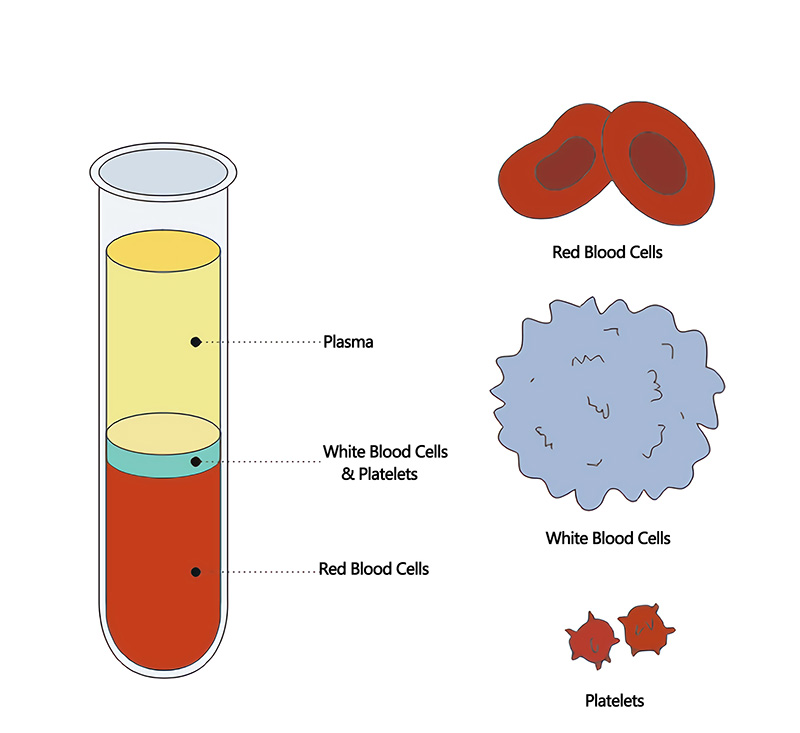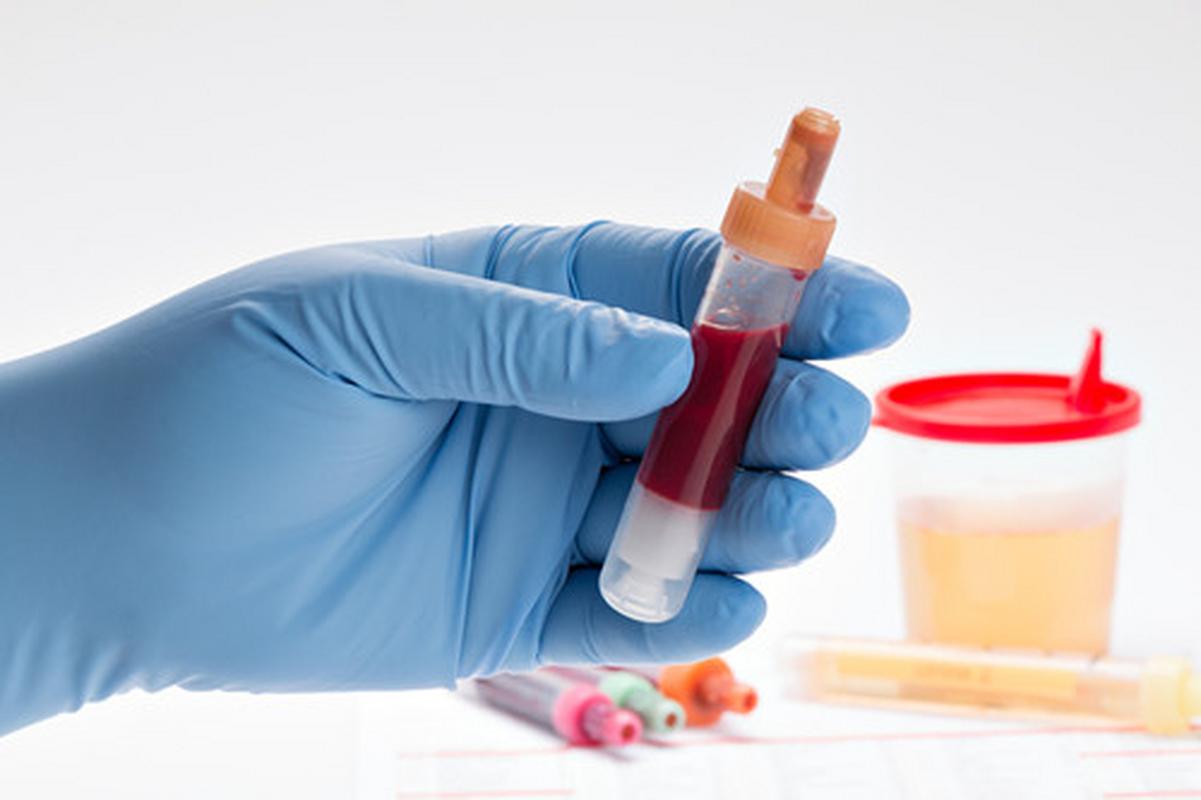Blood is a vital fluid that is crucial in maintaining good health. Did you know that your body contains about 5 liters of blood, enough to fill a standard soda can more than 50 times? This post will take a closer look at this essential fluid and explore its many bodily functions.

Our post will cover the following topics:
What is blood and its composition?
The main functions of blood, such as transportation, regulation, and protection.
Common blood disorders include anemia, leukemia, and sickle cell disease.
How blood disorders are diagnosed and treated.
By the end of this post, you'll have a good understanding of blood and its importance in the body. We'll also provide tips on how to maintain healthy blood function and what to do if you suspect you may have a blood disorder.
Blood is a complex fluid that performs a variety of essential functions in the body. It comprises four main components: red blood cells, white blood cells, platelets, and plasma.

Red blood cells, also known as erythrocytes, carry oxygen from the lungs to the body's tissues. They are rich in protein called hemoglobin, which binds to oxygen and gives blood its characteristic red color. White blood cells, also known as leukocytes, help defend the body against infection. They come in several different types, each with its specific function. Platelets, also known as thrombocytes, are tiny cells that play a crucial role in blood clotting. They help seal wounds and stop bleeding by forming clots at the site of an injury. Plasma is the straw-colored fluid that makes up about 55% of blood. It contains a variety of proteins, hormones, and other substances that help maintain homeostasis in the body.
These four components work together to maintain good health. Red blood cells carry oxygen and nutrients to cells, while white blood cells defend the body against infection. Platelets help stop bleeding, and plasma helps regulate body temperature, pH, and electrolyte levels. Maintaining a healthy balance of these components is essential for optimal blood function.
Blood performs a variety of essential functions in the body, including transportation, regulation, and protection.

One of the main functions of blood is to transport oxygen and nutrients to the body's cells and remove waste products. Red blood cells carry oxygen from the lungs to the body's tissues, while plasma has nutrients such as glucose and amino acids. Blood also helps remove waste products, such as carbon dioxide and urea, from the body's cells and transports them to the liver and kidneys for removal.
Blood helps maintain homeostasis in the body by regulating body temperature, pH, and electrolyte levels. Red blood cells contain proteins that help regulate body temperature, while plasma contains proteins that help maintain the body's pH balance. Blood also helps regulate electrolyte levels by transporting ions such as sodium and potassium from the body's cells.
Blood helps protect the body against infection and injury. White blood cells and antibodies help fight off infections, while specific proteins in the blood (such as complement and interferon) help activate the immune system. Blood also helps protect the body against injury by forming clots at the site of a wound. When damage occurs, platelets and specific proteins in the blood (such as fibrinogen) work together to create a clot that seals the wound and stops bleeding.
Overall, blood performs a vital role in maintaining good health by transporting oxygen and nutrients to the body's cells, removing waste products, regulating body functions, and protecting the body against infection and injury.
Blood disorders refer to conditions that affect the production, function, or composition of blood cells or plasma. Some common blood disorders include anemia, leukemia, and sickle cell disease.

Anemia is when the body does not have enough red blood cells or hemoglobin. This can lead to fatigue, shortness of breath, and other symptoms. A deficiency of iron or other nutrients in the diet, chronic blood loss, or an underlying medical condition can cause anemia.
Leukemia is a cancer of the blood cells that affects the body's ability to produce healthy blood cells. It is characterized by the uncontrolled production of abnormal white blood cells, which can crowd out normal blood cells and interfere with their function. Leukemia is often caused by genetic mutations and can be classified as either acute or chronic, depending on the type of white blood cell affected and the rate of progression.
Sickle cell disease is a genetic condition affecting red blood cell production. People with sickle cell disease produce abnormal red blood cells shaped like sickles or crescents. These abnormal cells are stiff and sticky, which can cause them to block small blood vessels and interfere with blood flow. This can lead to various complications, including anemia, infections, and organ damage.
Blood disorders can be diagnosed through various tests, such as a complete blood count (CBC), a blood smear, or a bone marrow biopsy. Treatment options depend on the specific disorder and may include medications, blood transfusions, and bone marrow transplants.
In this post, we've explored the structure and function of blood and discussed common blood disorders such as anemia, leukemia, and sickle cell disease. We've also covered how these disorders are diagnosed and treated.
Blood is a vital fluid that performs a variety of essential functions in the body, including transportation, regulation, and protection.
Maintaining a healthy balance of red blood cells, white blood cells, platelets, and plasma is essential for optimal blood function.
Blood disorders can affect the production, function, or composition of blood cells or plasma and can lead to various complications.
Blood disorders can be diagnosed through various tests and treated with medications, blood transfusions, or bone marrow transplants.
This post has given you a better understanding of blood and its importance in the b must consult your healthcare provider for further evaluation and treatment if you suspect you may have a blood disorder.
If you are looking for a sustainable blood collection tube manufacturer, I recommend you choose Yongkang Medical Device.
We are a leading manufacturer of blood collection tubes based in China. With over 29 years of experience in the industry, we have established ourselves as a trusted and reliable source of high-quality blood collection tubes. Our state-of-the-art manufacturing facility utilizes the latest technology and techniques to produce consistent and accurate results. We offer a wide range of blood collection tubes in various sizes and materials to meet the needs of our diverse customer base. Our commitment to quality and customer satisfaction has earned us a reputation as a top provider of blood collection tubes.
We look forward to working with you and helping you succeed in your research or clinical applications.
Thank you for reading! If you found this post helpful, please share it with your friends and leave a comment below.